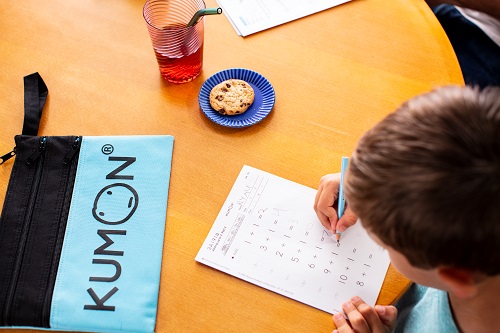There are many Questioning activities for students to improve their brain activities; here are the best five of them on this page. Keep reading.
As a teacher, one of your most important roles is to help your students develop critical thinking skills. One effective way to do this is by encouraging them to ask questions. Asking questions helps students clarify their understanding of a subject and encourages them to think more deeply and critically about the material.
Here on this page, you and I will discuss some questioning activities for students that you can use in your classroom. These activities will help your students develop their critical thinking skills and become more engaged in learning. Let’s get started.
>> See This Suggestion: Importance Of Comprehension Questions
Table of Contents
5 Best Questioning Activities for Students
Here is the list of the top five Questioning Activities for Students
Questioning the Text

One of the most effective ways and among the best Questioning activities for students is to encourage students to ask questions by having them question the text. This involves encouraging them to ask questions about their reading, such as why the author made confident choices, what themes or motifs are present, and the author’s intentions.
One way to do this is using the QAR (Question-Answer Relationships) strategy. This strategy encourages students to categorize their questions into four types: Right There, Think and Search, Author and Me, and On My Own. Right, There questions have a clear answer in the text.
Think and Search questions require students to use information from the text and their knowledge to answer. Author and Me questions require students to consider the author’s perspective and how it relates to their experiences. My questions require students to use their experiences and knowledge to answer.
Another way to encourage students to question the text is by using a guided reading approach. This involves having students read a text and guiding them through a series of questions that help them understand and analyze it. These questions can range from simple recall questions to more complex ones requiring students to analyze the text and draw conclusions.
>> See This Suggestion:: Generating Questions For Reading Comprehension [ Best Guide]
Pretending
Pretending is a powerful tool for learning and more powerful Questioning activities for students, and it can also be an effective way to encourage questioning activities among students. When students engage in pretend play, they can explore different perspectives and scenarios, which can help them develop critical thinking and problem-solving skills.
Pretending can provide students a safe and creative space to ask questions, experiment with new ideas, and explore their curiosity.
Pretend play can take many forms, such as acting out a story, role-playing, or creating imaginary worlds. During these activities, students are often prompted to ask questions, such as “What would happen if…?” or “What if we tried this instead?” This encourages them to think critically and to explore different possibilities.
Also, pretending can help students develop empathy and understanding for others. When students take on different roles or perspectives, they can see things from different points of view and consider how others might feel or react in a given situation. This can help them develop social and emotional intelligence, an essential aspect of success in and outside the classroom.
CHECK OUT: How to Get Students to Ask Higher-order Questions [10 Ways]
Questioning The World
Another Questioning activity for students is encouraging them to question the world around them, which is another effective way to develop their critical thinking skills. This involves encouraging them to ask questions about the world, such as why things work the way they do, the consequences of specific actions, and how different perspectives might shape their understanding of the world.
You can have students engage in inquiry-based learning. This involves presenting students with a real-world problem or question and then having them work together to investigate and find solutions. This approach encourages students to ask questions, think critically, and work collaboratively.
You can also encourage students to question the world by using case studies. Case studies involve presenting students with a real-world scenario and then having them analyze and evaluate it. This approach encourages students to think critically about the world and consider different perspectives.
Group Debate [Questioning Each Other]
Encouraging students to question each other is another effective way to develop their critical thinking skills. This involves having them ask questions of their peers, such as why they think a certain way, how they arrived at a particular conclusion, and what evidence they have to support their arguments.
There’s something called the Socratic method. This involves having students engage in a dialogue in which they ask and answer questions to arrive at a deeper understanding of a topic. This approach encourages students to think critically and to consider different perspectives.
You can also use debate; Debates involve presenting students with a controversial topic and then having them argue for or against it. This approach encourages students to think critically about different perspectives and to consider different arguments.
SEE ALSO: 50 Smart Questions to Ask a Teacher as a Student
Questioning Themselves
Encouraging students to question themselves is another effective way to develop their critical thinking skills. This involves asking them questions about their thought processes, such as why they believe something, how they conclude, and what biases might influence their thinking.
One way to do this is by using metacognition strategies. Metacognition involves encouraging students to think about their thinking. This approach encourages students to ask questions such as, “What do I already know about this topic?” “What questions do I have?” and “What strategies can I use to understand this concept better?”
Another way to encourage students to question themselves is by using self-reflection activities. Self-reflection activities involve having students reflect on their learning, such as what they learned, how they learned it, and what they could have done differently. This approach encourages students to think critically about their learning and to identify areas where they need to improve.
Letting Students Talk With Leaders
Letting students talk with leaders is an essential aspect of education that can have many benefits for both the students and the leaders and also a potent Questioning activity for students that can change a student’s life forever. It allows students to learn from real-world experiences and gain insights from successful individuals who have overcome challenges to achieve their goals.
There are several ways that schools and educators can connect students with leaders. One of the most effective ways is to bring leaders into the classroom to speak with students. This can be done through guest speaker programs, where successful individuals are invited to share their experiences and insights with students.
FAQ
What are the top five questioning strategies?
Consider asking questions that promote analysis and reasoning. Excellent questions are prepared in advance.
Ask questions that all people can answer.
Give kids some time to reflect.
Do not evaluate the responses of the kids.
Students’ replies should be followed up with in a way that promotes more profound thought.
How are questions taught to students?
Seven suggestions for encouraging students to ask questions in the classroom
Create a safe space for questions in your classroom.
Give your students feedback when they ask questions and teach them the difference between open-ended and closed questions.
Provide opportunities for practice by slowing down to make space for questions.
Reference
- https://en.wikipedia.org/wiki/Socratic_method
- https://www.readingrockets.org/strategies/question_answer_relationship






